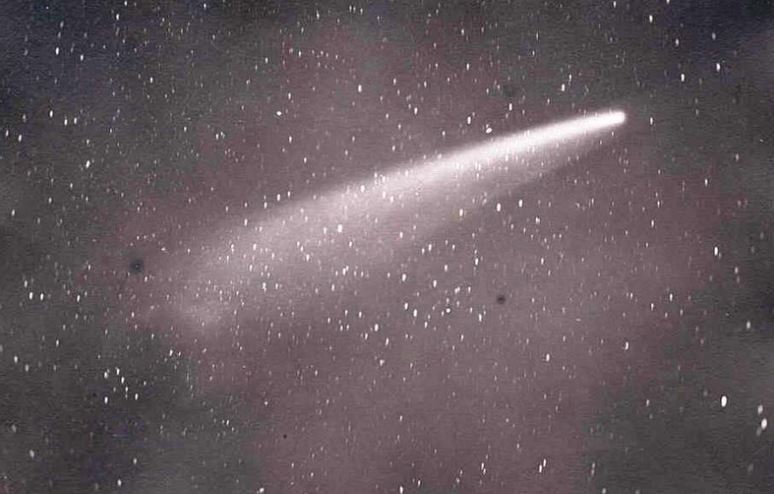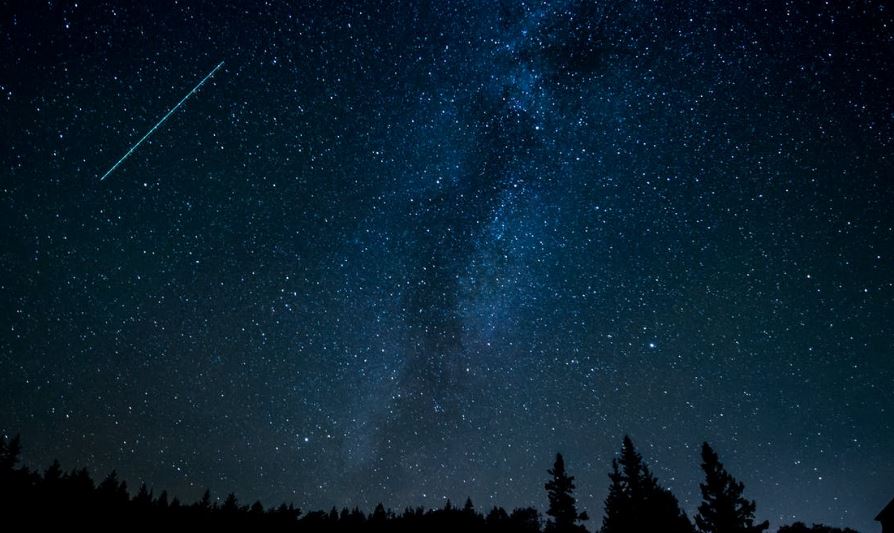The strange phenomena of different types of celestial objects and bodies have always excited us! There are many of them out there that have such unique aspects that scientists have not been able to figure out despite years of research. For example, some comets are extremely bright and pass by close to the sun and Earth. With various characteristics and orbital properties, these comets have intrigued astronomers in learning more about them. One such comet is The Great Comet of 1882 which got popular for being apparent right next to the sun in daylight.
Overview of The Great Comet of 1882
The Great Comet of 1882 was seen in September 1882 and was categorized as a member of the Kreutz Sungrazers. The official names of this comet include C/1882 R1, 1882 II, and 1882b. Much like the other comets in our solar system such as the Great Comet of 1680, this one was also observed by many people at once. This is why the comet has not been named after a specific discoverer. The comet had an elongation of 30 degrees when sighted and as it reached the perihelion, it got even brighter.
At its brightest, the comet reached a magnitude of -17 which is known to be one of the highest magnitudes for any comet. The orbital period of The Great Comet of 1882 is somewhere between 600 to 800 years. It is also considered a part of a comet that broke down into pieces because similar observations of many such comets have been made in a short period. W. H. Finlay is the first astronomer who studied and researched The Great Comet of 1882.
Timeline of The Great Comet of 1882
As stated earlier, the comet was not discovered by someone in specific, rather the first people who saw this comet were just casual observers. On 1st September 1882, the comet was seen from the Cape of Good Hope in South Africa. The Gulf of Guinea was also reported among the locations where The Great Comet of 1882 was spotted. It was a suddenly appearing visible object in the sky which is why it could not be referred to as an astronomical discovery.
William Finlay, a South African astronomer, started studying the comet after he reported its sighting. He independently discovered the comet on 8th September at the Cape Observatory located in South Africa. According to the initial report by William Finlay, the comet was at 3rd magnitude at minimum or even brighter.
On 15th September 1882, the comet was only 11 degrees from the sun which turned the comet’s brightness to -2. By 17th September 1882, the comet reached the perihelion where it was the brightest. The comet was between the sun and the Earth at this time. Generally, that would make a comet not visible. However, in the case of The Great Comet of 1882, the comet was very bright which is why if someone covered the sun with their hand, they could easily see the comet in the back.
As seen from a telescope, the comet now had a brightness of a magnitude of -14 to -17. Not many comets have been seen which have such a high brightness or magnitude at perihelion. The perihelion distance of this comet was 480,000 kilometers or 0.0032 Astronomical Units. David Gill, an astronomer in Cape, said that on 18th September, the nucleus was single and over 4 inches in diameter.
The view not only surprised many astronomers but also got them wondering how this comet was displaying extraordinary brightness while others didn’t. It indicated that there could be various particles that got closer to the sun and gave away extensive light. More conclusive research could not be done because the comet comes once every 700 to 800 years.
As the comet passed through the perihelion point, the comet moved to a dark area and faded a bit. However, it was still visible to the naked eye although it was not as bright. Eventually, the astronomers found out that the tail of the comet was 25 degrees long. At some point in the dawn, the comet would be visible. At the beginning of October, the comet moved away from the sun to a major extent.
The comet made a reappearance after a while as well. It was last seen in June 1883 after which it was too far away to be observed from a telescope from Earth.
Observations of The Great Comet of 1882
Despite getting away in distance and fading, the comet did not seem to lose its light and was still a highly bright object. Astronomers started to study the comet again and found out that the comet had an elongated nucleus and broke into two different balls of light. By mid-October, astronomers found out that this comet was broken into at least 5 fragments which is why they were still visible. They were different in size, light, as well as relative brightness from time to time.
AStronomers later found out that there were around 10 to 15 fragments of this comet each of which was 15 minutes across. They were six degrees from the main comet. Researchers are unable to identify why this occurred and there were several pieces of the comet. Some suggested that this could be because of the dust that was produced by other comets.
By December 1882, the nucleus of The Great Comet 1882 reached its maximum size. This is why it was visible to the naked eye for several months, although at a great distance. By the end of February 1883, the comet was no longer visible to the naked eye. Telescopic visions were still possible. Astronomer B. A. Gould made the last sighting of this comet on 1 June 1883 at Córdoba.
Another study of this comet revealed that it could be the same comet that had a reduction in the orbital distance at each perihelion passage. Researchers found out that this comet had an identical path to previously seen comets C/1843 D1 and C/1880 C1. Other properties of these comets were also the same such as high magnitude, brightness, and being very close to the perihelion. However, this theory was soon rejected as the orbital distance of these comets varied a lot and showed a slightly unusual pattern.
Soon afterward, another theory by Heinrich Kreutz suggested that three comets were a fragment of a much larger progenitor comet that had broken when being close to the sun. This theory was considered much more reliable as this could be easily possible.
Based on this theory, X/1106 C1 is the primary comet and The Great Comet of 1882 is a fragment of it. Further studies provided the idea that C/1843 D1, C1882 R1, C/1880 C1, C/1887 B1, C/1963 R1, C/1965 S1, and C/1970 K1 were all a part of the same comet. While this theory is generally accepted in the astronomy community, there is no conclusive evidence that all of these are a part of the same comet. One common factor in the comets which are a member of Kreutz Sungrazers is that they pass within 1R of the Sun’s photosphere when they are at the perihelion.
First Astronomer to Observe – William Finlay & David Gill
William Henry Finlay has been credited with the first astronomical discovery as well as the most recent study conducted on The Great Comet of 1882. He was born on 17 June 1849 and died on 7 December 1924. The former was a South African Astronomer and was working as a first assistant at the Cape Observatory when he got the chance to discover and study this comet. He has also spotted Comet 15P/Finlay. He has had multiple publications as well as recognition for his work in astronomy. Astronomer David Gill is also known to have observed The Great Comet of 1882 and taken its pictures.
Conclusion
The Great Comet of 1882 has been truly an astonishing one. From the sudden bright appearance to the breaking of comets into multiple fragments, the comet has been quite interesting in astronomy. While it won’t make an appearance any time soon, the comet still posed many questions that scientists are looking for answers to. It is ranked as one of the most popular comets in our solar system.



